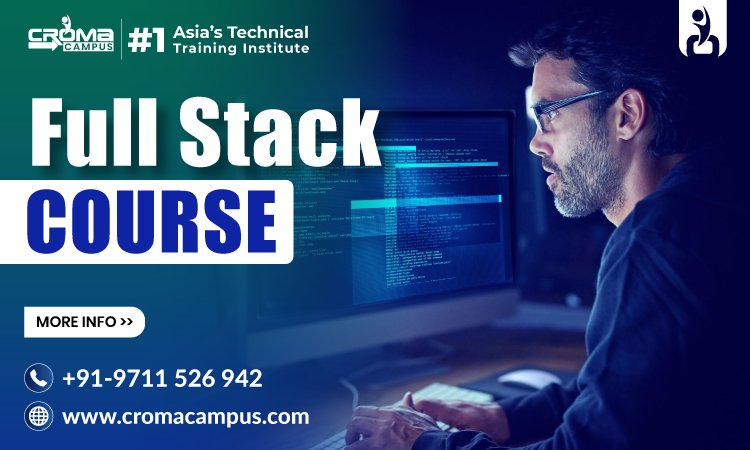Why Full Stack Web Development Ideal for Startups?
Introduction
Full-stack development is an ideal choice for startups because it provides numerous benefits. Full-stack development ensures better efficiency and provides cost-effectiveness. In addition, it reduces the time to market and is capable of handling both front-end and back-end development. Along with this, it also accelerates the development process and reduces time-to-market. To further know about it, one can visit the Full Stack Developer Course Online. Apart from these, given below are some significant reasons why full-stack development is ideal for startups.
- Cost Savings- Startups have a single team that handles both sides of development. Implementing full-stack development can potentially save on hiring costs and coordination efforts.
- Flexibility and Adaptability- Full-stack developers are skilled in agile methodologies and they allow rapid iterations and adaptability to changing requirements.
- Diverse Skill Set- These professionals are capable of handling various tasks, from designing interfaces to writing server-side logic. Thus, providing flexibility in a fast-paced startup environment.
- Holistic Perspective- The full stack development approach provides an understanding of the entire development process. Thus, helping in making informed decisions and optimizing the overall product.
- Problem-Solving- A full-stack developer can effectively troubleshoot issues across different layers of the application. It also streamlines the development and maintenance process.
- Rapid Iteration- The Full stack development approach helps in building and iterating on prototypes. Furthermore, it allows startups to gather feedback and make necessary adjustments.
What Careers Can I Explore in Full Stack Development?
Full-stack development offers a diverse range of career paths. Along with job opportunities, this career also provides you with freelancing opportunities for various projects for clients. There are many career paths available in full-stack development and the specific role you choose will depend on your interests, skills, and career goals. The Full Stack Web Development Course Fees range from 40,000 to 60,000 INR and enrolling in it is a very beneficial career choice. Below are some of the high-paying careers you can explore in full-stack development.
- Full-Stack Developer– These professionals have to work on both front-end and back-end development. Their responsibilities include designing, building, and maintaining web applications.
- Web Developer– As a web developer, you have to focus on the front-end development and user experience. Furthermore, they also use HTML, CSS, and JavaScript to build interactive web pages.
- Software Engineer– These professionals work on various aspects of software development. Along with this, they also work on designing, coding, testing, and maintaining software applications.
- Web Application Developer– These professionals work on developing web applications using full-stack technologies. Furthermore, they also handle both front-end and back-end components.
- Front-End Developer– These professionals focus exclusively on front-end development. Furthermore, they are responsible for creating the user interface and user experience.
- Back-End Developer– As a back-end developer, you will be responsible for focusing on server-side development. Furthermore, they also have to handle database interactions.
- DevOps Engineer– These professionals have to work on bridging the gap between development and operations teams. Along with this, they also manage the deploy the web applications.
- Technical Lead or Architect– Their primary job role is to oversee the development teams and provide technical guidance. Furthermore, these professionals also design technical architectures.
Top Interview Questions for Full Stack Web Development
Preparing for a Full Stack Web Development interview requires a solid understanding of both front-end and back-end technologies. Here are some common questions to expect:
- What is Full Stack Development?
Explain how full stack development involves both front-end and back-end development. You might be asked to define technologies like HTML, CSS, JavaScript (front-end), and Node.js, Express.js, or databases like MongoDB (back-end). - Explain the concept of RESTful APIs.
Interviewers may want to know how RESTful APIs work, how you integrate them into your projects, and the significance of HTTP methods like GET, POST, PUT, and DELETE. - What are some differences between SQL and NoSQL databases?
Be ready to differentiate between relational (SQL) and non-relational (NoSQL) databases and explain their use cases. - Describe the MVC architecture.
Explain how Model-View-Controller architecture is applied in web development to separate business logic from the user interface. - What is the role of version control in web development?
You may be asked how tools like Git and platforms like GitHub are used to manage code. - Explain the box model in CSS.
This is a fundamental front-end question, testing your knowledge of how elements are rendered in web pages. - How do you ensure responsive web design?
Prepare to discuss media queries, flexbox, or CSS Grid for creating adaptable layouts across devices.
Conclusion
Full-stack development offers a versatile and rewarding career path. It provides opportunities to work on a wide range of projects and contribute to the success of startups and established organizations. With the growing demand for skilled full-stack developers, many institutes are providing the Python Full Stack Developer Course. Above all, individuals with a passion for technology and a desire to build innovative products can find fulfilling careers in this field.






